Part 1 of 5
Preparing a trident maple for exhibit requires a lot of work. Fortunately, most of this work happens long in advance of the exhibit. Having developed what branches I could this summer, all that remains is a little clean-up and repotting.

Root-over-rock trident maple
Plucking spent leaves and removing extraneous branches doesn’t take long. Repotting, in this case, doesn’t take long either, though it must be done with care. I’ve owned this tree long enough to know that it needs repotting every year, but the work is usually straightforward.
The first step is removing all wires that poke through the bottom of the pot. I usually begin with the tie-down wires and then remove the clips that hold the screen in place.
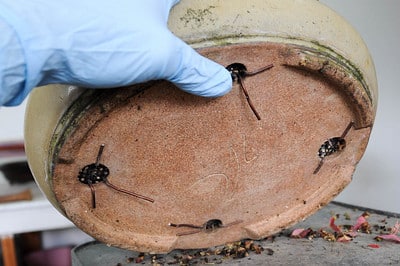
Tie-downs cut
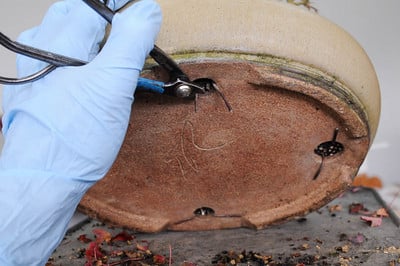
Cutting the clips
I’m always sure to remove all of the wires as a single remaining wire can help a tree cling to its pot with surprising tenacity. Once the wires are removed I set the pot back down and get out the sickle.
The signature on the bottom of the pot, if you are curious, belongs to Sara Rayner.
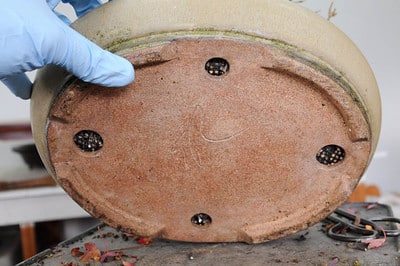
Wires removed – ready for the next step
Sickling is hard work. This simple task can become unbearable if a tree hasn’t been repotted in a while, or the soil is brick-hard, or the roots have filled in solid. Further antagonists include low-growing branches and pots that curl inward toward the lip.
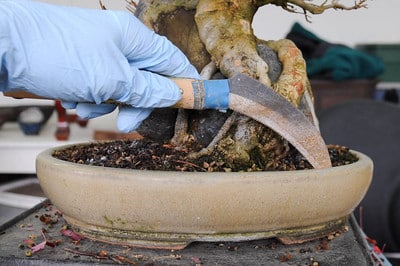
Sickle-time
Using a small sickle or a sod-knife, I carve a narrow trough between the rootball and the sides of the pot. This is the most dangerous part of the process. While one hand holds the pot in place, the other works quickly with a sharp implement in close proximity. Watch out for your fingers!
I’ve found that a smooth, scraping motion works better than vigorous jerking or saw-like motions. While scraping the surface with a shallow motion seems to get you nowhere with large pots, it creates clean margins that actually make the work more effective.
How much scraping you do depends on the tree and the pot. Since the idea is to disturb the roots as little as possible at this point, it’s important to do no more scraping than necessary. That said, trying to remove a tree before the roots are free is a good way to damage roots.
For square, rectangular, and oval pots, one needs to free two short sides of the pot and one large side. Trees usually release from round pots after about half of the diameter has been cleared. In all cases, scrape to the very bottom of the pot. Because roots tend to circle at the bottom, stopping short of this mass can prevent the tree from escaping its container.
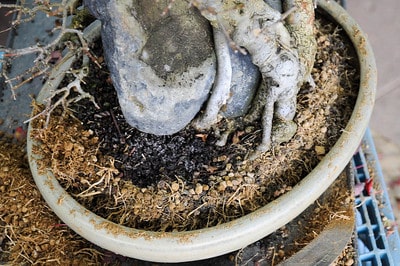
Soil cleared
The last step – actually removing the tree from the pot – requires care. Try to keep the pot on the workspace while tipping the tree away from the pot by raising the end of the rootball that has been cleared with the sickle. Dangers at this stage include crushing branches and flicking pots to the floor.
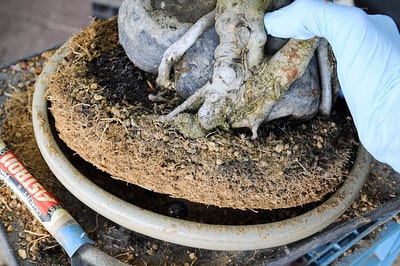
Tilting the rootball away from the pot
While these steps may seem a bit formal for something that is done with a simple plonk to trees growing in nursery containers, each step helps us avoid common pitfalls. Experience will provide further guides.
Next up: Part 2 – preparing the pot.
Subscribe to Bonsai Tonight
New Posts Delivered Every Tuesday and Friday